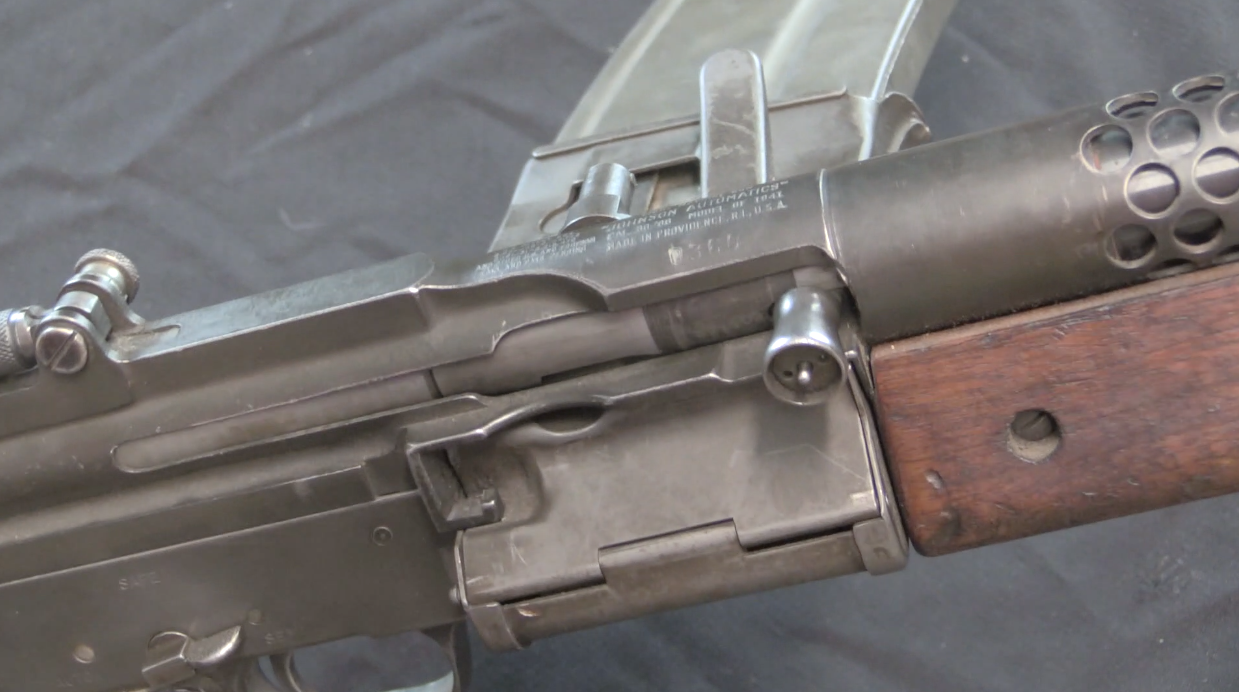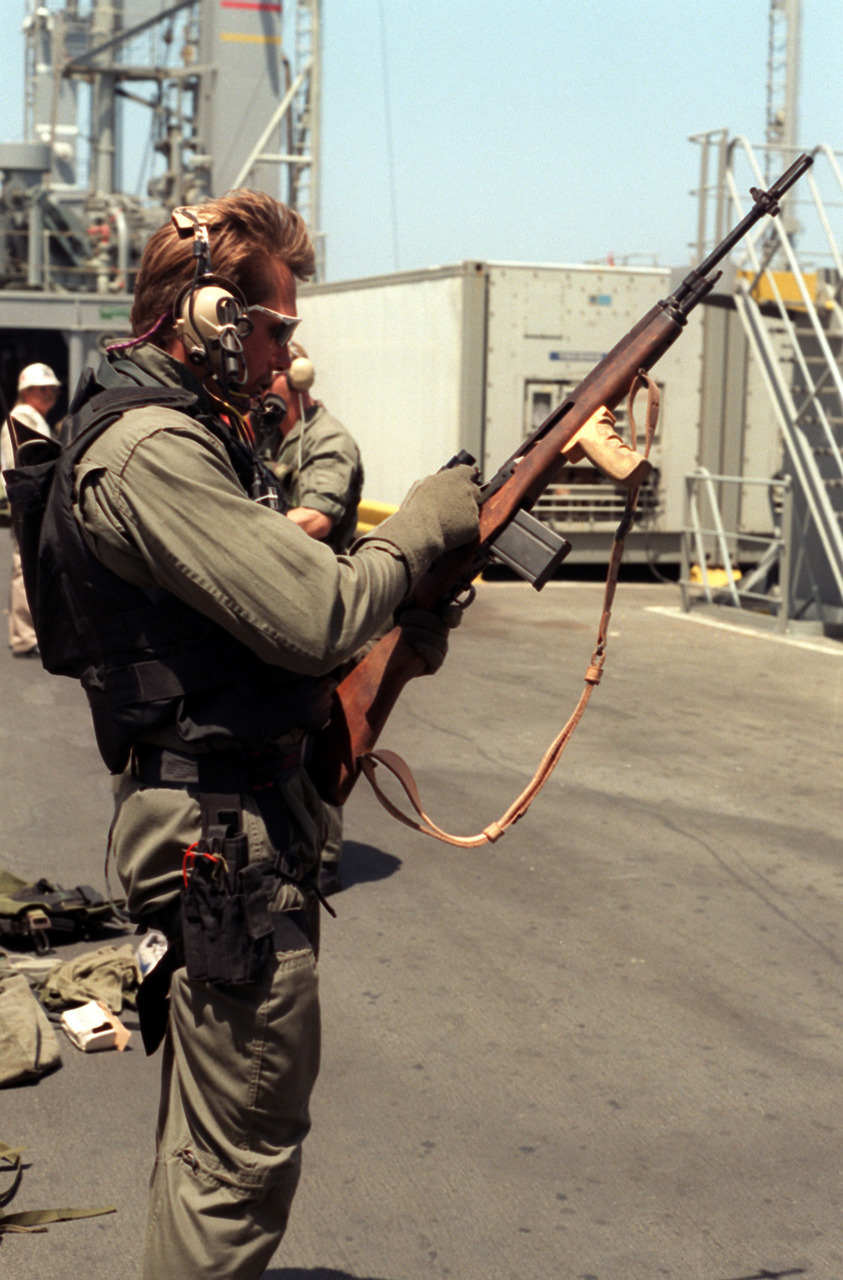The United States had two primary types of sniper rifles during World War One, although both were based on the M1903 Springfield rifle.
The most common optic used was the Warner & Swasey “Telescopic Musket Sight”, a rather clumsy prismatic optic mounted on the left side of the rifle, on a detachable rail. The model 1908 W&S offered 6 power magnification, which was reduced to 5.2x in the 1913 model in an effort to increase field of view. These optics were also used on the M1909 Benet-Mercie light machine gun.
The second type is the Winchester A5 scope, an excellent commercial scope available at the time. Although usually associated with the US Marine Corps, several hundred of these were also issued by the Army. The A5 was a much more tradition type of optic, mounted centrally above the bore and preferred by competitive marksmen.
The third rifle we are looking at in this video is a very interesting example of a competitive rifle from the pre-WWI period. It is a 1903 Springfield fitted with a commercial A5 scope and Mann bases. This is the sort of rifle that would have been used by the career military shooters for competition, and would likely have accompanied many such men overseas in the American Expeditionary Force. Woe to the German who found himself in the sights of such a man with a rifle like this!




Keep the scope simple and airtight. I can see why this beats any complicated prismatic scope… Or am I wrong?
Our, U.K Susats, whatever that means… We adjusted by moving them, on the mount, as oppose bits inside. Now, what benefit that has, if any, I don’t know. But you could drop the rifle, on the sight. Heavy rifle, for something so short, and the sight worked. Maybe it was a lack of a recticule? I.e. The bit you move inside the scope. Thus, maybe that is the benefit- Less delicate.
The movable bits, are less fragile. Possibly…
The A5 scoped 03s were supposed to be quite fragile in combat use as well, even though they were considered superior to the W&S. That was the nature of early optics. I don’t believe they were airtight like modern optics are. I don’t think inert gas purging and sealed scopes came along until much later. I remember reading that Carlos Hathcock in Vietnam had to set his optics out in the sun to bake the moisture out of them.
Well, I asked if I was wrong. Were there any scopes of the period not prone to getting shattered by pratfalls or by random artillery debris?
Rifles get dropped, not just when someone gets shot, or hit by artillery. It just happens, 3 point sling or otherwise. Trying to hold a riot shield, leg guards, your dinner, a waterproof jacket, stick, helmet with visor, bulky radio and bulkier batteries. Shoite happens, even if the sight says on it or on the box originally don’t drop me I may leak radioactive gas.
Quite robust as it turns out.
I think you definitely got the simple part right compared to the W&S.
On his original Scout Rifle project, Jeff Cooper always insisted on a scope which, if it had adjustments at all, had only external ones precisely t avoid problems with fogging, misaligned reticle, etc.
He specifically cited the problems with internal-adjustment scopes in combat as the reason.
His preference was a Burris long eye relief (LER) pistol-type scope in either 2.5X or 4X, either one fixed-power. it must b noted that such scopes were used on lever-action Winchesters like the Model 1894 for a generation before the Angle Eject ’94 was introduced.
The LER scope was normally mounted on a mount that replaced the rear sight; most included a peep sight allowing use of the iron sights in a close-range “snapshot” situation.
It’s still an entirely reasonable setup for a carbine, for any purpose.
cheers
eon
The criticisms levelled at the external adjustments by people who did a lot of shooting, was of grit getting into the adjustments and sticking them, and also wearing the thimbles and the scope. Internal adjustments tended to be better sealed against dust and grit.
External adjustment was still present for windage on the dedicated Ziess Jena (east German)scopes that came for Brno rifles, right into the 1980s.
I have a Bausch & Lomb Balvar 8 hunting scope, probably from some time in the 60s, that has all its windage and elevation adjustment in the rather unusual scope base. This was no doubt tried out by my grandfather on one of his rifles, but all those had typical bridge mounts and Weaver K4 on them when he passed away. The advantage of external adjustment kind of goes away when you put a zoom ring on the scope.
The problem with scopes out in the world comes mainly from fogging. They always fog up at the worst time. ^__^
There is a book about training and using sniper rifles in WW1:
“Sniping in France” by Major H. Hesketh-Prichard, pub in 1920.
Available on Amazon.
Also available here:
https://archive.org/details/snipinginfrancew00pricrich
Love the full length of the A5 scope. I’d love to buy one as a reproduction. It would make a cool retro deer hunter. You’d defintaly stand out from the crowd with it gracing a 03 or 1917 in full military dress. Now that’s my kinda hunting rifle.
“cool retro deer hunter”
Once you get that set up I’d love to hear how it works in the field.
I have a Weaver 330 that is a miserable little soda straw of a sight that I wouldn’t give to an enemy. ^__^
Brian
What reticle pattern does your 330 have? If it has the fine cross hair pattern I understand why you would hate that optic. I have a soft spot for vintage “soda straw” glass on a vintage rifle. It just looks good to me. I’m also the guy that shows up for the muzzle loader hunt with a flintlock when everybody else brought a modern inline. I’d love to put that 03 together sometime in the future but the current place that I’m living at makes that an impossibility.
Mikawa B
This one has the tapered vertical post. It’s an early design, I know, so I should cut it a break. But it’s not very good, really. If you get one and put it on a rifle, zero it at some reasonable range and hold off, the adjustments, (at least on this example), are not repeatable. I had a laugh with a buddy of mine walking it around a square sighting target. His comment, “Snipers used this thing?!?” ^__^ Maybe the government issue ones were made to a higher standard, or maybe this one is just messed up, but this particular example is not up to the job.
Brian
Rodger that. I got a good laugh from the story of you and your friend walking the shots around a sight in target and your friends remark. It reminded me of a line from “Outlaw Josey Wales” when Lone Watie was asked, “Do you have any food?” and he replies “I only have this piece of hard rock candy, but it’s not for eating it’s only for looking through.” Well it sounds like the 330 not for shooting accurately, only for looking through. ^_^
The W&S prismatic scope screams “artillery” to me. It looks like a pretty decent scope for an infantry gun, especially if the reticle had some graduations. The big eye piece makes it easy to keep your eye at the correct place when you turn the elevation and traverse wheels. As such it was probably okay for a heavy tripod mounted machine gun as well, which tend to resemble artillery pieces more than other small arms, especially at long range shooting.
Agreed. Artillery sights tend not to get smashed by enemy infantry in the field, so prismatic scopes would likely be good in the long range battery use. Prismatic and periscopic sights were also an option for tripod-mounted heavy machineguns like the Japanese Type 92, which did more than compensate for its need of oiling by means of long range precision bursts, good enough to pick off targets of importance such as platoon leaders, flamethrower troops, and (illegally) medics…
Did I mess up?